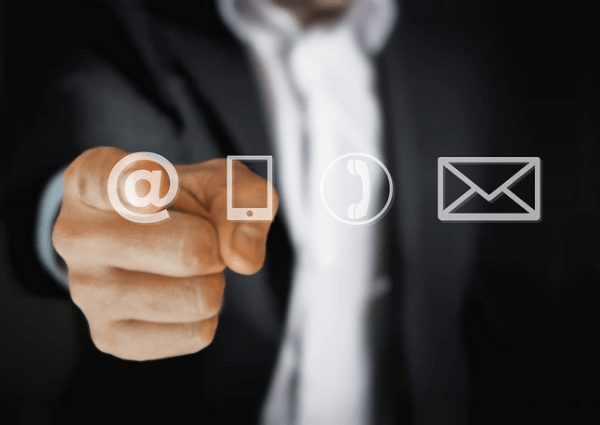
Choosing your professional working backdrop
January 29, 2021
Reorganise your business by appointing a Non Executive Director
March 2, 2021Using emails is a crucial element of digital technology
Phone usage
It’s no surprise that the phone in your customers hand is the most used electronic device. Within this small portable gadget is a plethora of information waiting to be discovered. From consumer buying habits, social behaviours and economic trends never before has one device been so transferable.Small business owners will understand the vital role this plays in their own day to day. Managing a range of duties pertaining to leader, accountant, motivator, salesman and marketer, they need to be accessible at all times.
The trend of being digital
One of the most sort after technical pieces of data is an email address. Regardless of other explosive digital applications designed to snare information, it is still considered to hold an immense power. It has the highest Return of Investment due to the low cost associated with obtaining the information. Outweighing the use of social media channels.This single address can be used as a communication tool to create customer engagement, sales opportunities, push notifications to latest blogs and newsletters, surveys to collect feedback, promotional discounts and company awareness.
But many still fail to collect and use them efficiently.
Email Business Handle
When using emails ensure that you have the right handle for your business name avoiding free addresses. Everything you do should reflect professionally on your company so spending money to obtain the right address is truly worth it. Not only does this promote your company name it also shows your customer you are a legitimate business.Collecting emails is just the start, once you have them create useful lists capturing the information in your Customer Relationship Management database.
Creating an audience
Every marketer understands the importance of Know Your Customer. Spending time to create audience profiling will help to ensure you are engaging with the right people. Hundreds of likes and shares flowing back and forth between a varied audience, who are unlikely to purchase is worthless.Once you have established the first level of identifying a set of criteria relating to your customers purchasing habits, demographic and geographical locations aim to dig deeper. Rinse and repeat ensuring you fully understand who are your customers and what are their needs. This will help to tailor emails targeting different customer groups sustaining a relevant audience.
Seek Permission
When GDPR first happened the world of business went into a state of disarray and whilst this was some time ago the rules still apply. You must seek permission to collect and use addresses, allowing each customer, the choice to opt in without automatically signing them up.This legal framework is designed to protect customer data and your company. It examines the big HOW including access, collection, storage, audit and privacy of private information applying safety first. Never share or sell any of the email addresses captured. If a customer does unsubscribe remove them from any list or database immediately. Be a legitimate business and use it to engage with your customers responsibly. Always remaining transparent explaining upfront in your privacy statement how you plan to utilise their information.
Don't flood your customer
Getting an email address can lead to excitement causing you to over send. If you do this, you'll ultimately be sending your customer looking for the unsubscribe button. Think about how often you like to receive emails and imitate this process. Think before you send aiming to post out approximately once every two weeks.Present information professionally, proof reading and checking before hitting submit. And similarly, to any type of communication ensure they are properly addressed, names spelt correctly and concluded with your business signature. Use of Emoji’s and slang is still a contentious subject. Some customers might appreciate a smiley face whereas others may be more old school. Use these wisely and sparingly until you have established a rapport.
Trust in your brand
Rather than blanketing all your clients with the same message, stop and create an email marketing strategy. Planning what you want to say, to whom and what you expect to receive so you can monitor and track the success. Consider your customers pain points and help to solve them positively.The most successful businesses learn to retain customers by solving problems rather than just promoting their goods and services. They shift the premise from themselves onto their customers. Create a trusted wealth of content so when your customer receives your notification, they will automatically open and digest.
Dont be afraid to experiment
Most business owners are too scared to try different types of content in fear of ostracising their already established audience. But if you don't try you won't know who else you might find to buy your products. Be creative aiming to develop KPIs to analyse what works and what doesn't. Your customers need to feel you understand who they are today and what they need going forward.Remaining professional to a point but without being overly friendly is a hard balance to strike. If planning a new campaign ask a select group of trusted customers to test before release. Put yourself in your clients’ shoes by referring to emails that you personally receive from suppliers, understanding the tone, content and message emulating their style if you find it works.
Feedback and surveys
Most businesses are often afraid to ask their customers for feedback in fear of receiving negative responses. But approaching the client directly is much better than having them sharing their dissatisfaction on social media for the whole world to see. Besides if you don't ask questions then your business will fail to evolve. Seek responses on how you are meeting their needs and whether they need more help.Create regularly automated surveys carefully considering what you want to know and what you will do with the information. Listen to the feedback, don't dismiss it by putting it on the shelf. Actively try to implement improvements ones your customer actually wants.
Conclusion
In a world full of apps and tools specifically designed to help marketers gain and track information, the pressure is on you to understand how to use it. Collecting addresses and then discarding them is a waste. If your customers opt into receiving information, newsletters, blog notifications etc. This means they want to hear from you.Ensure you use the information carefully, paying attention to the legalities of being in receipt of sensitive data. Think of ways to promote and send helpfully created messages to targeted groups, pointing towards your website and social channels to obtain more visitors and followers. Remember emails are a two-way communicative method and digitally proficient customers expect real time responses.
Emails may seem a bit outdated as they were one of the first peices of technological data that businesses wanted to obtain. But the weight they carry is still relevant today. With their phone constantly in hand, you are only one click away from reaching out and communicating with your customer.





